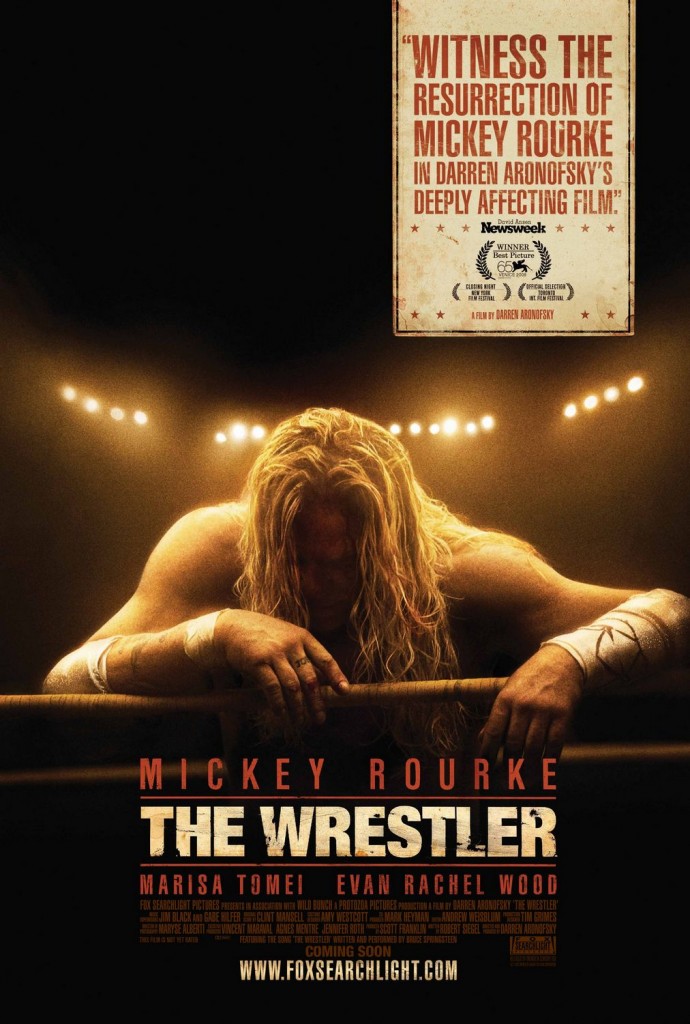Monday, March 24, 2014 2:38 am
Walter Fisher “regards almost all types of communication as story” (308). Further, he believes that narrative paradigm is a combination of “narration,” or symbolic actions, and “paradigm,” which is a conceptual framework. Thereby, narrative paradigm is a “theoretical framework that views narrative as the basis of all human communication” (312). Finally, Fisher argues that there are standards of narrative rationality – which he breaks into narrative coherence and narrative fidelity – that people use in order to determine which stories they will accept. Fisher’s theories remind me of the TV show True Detective. Throughout the show, two policemen are interviewed about a case they had years ago together, but has since gone cold. As they are interviewed, the cops engage in a heartfelt rehashing of the facts as they unfolded, taking the viewer on a trip through the past, instead of simply telling all the facts quickly in a summary. Although such retelling is partly done because the directors needed material, the characters in the story also represent realistic cops that aren’t necessarily all good or all wrong. One of the cops is an alcoholic and the other is cheating on his wife, yet both clearly care about solving the case and bettering the world in which we live. Thereby, they strike a responsive cord in the audience as well as share values with the audience. Thus, these two examples, respectively, reveal how the show portrays narrative rationality and fidelity, and therefore makes the show a good example of Fisher’s narrative paradigm. I strongly encourage all who haven’t to watch the show; I have attached a link to the trailer below.
True Detective: Official Trailer (HBO)
Monday, March 24, 2014 1:54 am
Walter Fischer’s narrative paradigm is defined as a “theoretical framework that views narrative as the basis of all human communication” (p. 312). His paradigm relies on five general assumptions that people are storytellers, people make decisions based on good reasons, people’s past experiences determine what they consider good reasons, narrative rationality is determined by the coherence and fidelity of stories, and that the world is filled with stories that re-create our lives. Narrative paradigm is used in order to better understand communication through the act of storytelling. This theory reminded me of the movie Forrest Gump, in which the main character, Forrest, waits at a bus stop telling his life stories to strangers he encounters on a bench throughout the day. The movie consists of Forrest’s stories and clips to align them, for which he depicts both narrative coherence and narrative fidelity. Narrative coherence is the idea that the story hangs together, in which it does in Forrest Gump, for his stories are also chronological stories of historical events throughout the past few decades of American history. Therefore, there is an immense sense of internal consistency because they fall into well-known time periods. Narrative fidelity is the concept within narrative paradigm that ensures the story strikes a responsive chord. Throughout Forrest Gump’s stories, the screen would revert back to him and his various listeners’ on the bench, in which the audience would see listener’s crying and multiplying. The values in Forrest’s messages were regarded as immense acts of kindness and truthful living that his listeners seemed to be taken by.

Monday, March 24, 2014 1:18 am
Walter Fisher’s “Narrative Paradigm” shows the belief that there is no communication that is purely descriptive or didactic. We, as humans, are natural storytellers and a lot of our communication stems from stories. Fisher argues, though, that “not all stories are equally good” (312). Stories have to have narrative coherence and narrative fidelity for them to accomplish anything. In the movieBed Time Stories, Adam Sandler, the main character, tells stories to his niece and nephew every night he watches them before bed. The two kids love these stories because to them, the stories have narrative fidelity. They buy into the story, and thus they buy into the characters and want to be like the characters. The irony is, the bedtime stories always kind of come true in Adam Sandler’s life, so they do become like the characters. If the stories did not have narrative fidelity, they would not have liked them, and they would not have wanted to become like the characters.

Monday, March 24, 2014 1:18 am
Walter Fisher says that we are narrative beings who “experience and comprehend life as a serious of ongoing narratives, as conflicts, charters, beginning, middle and ends” This fairly simplistic theory is seen in the movie Forest Gump. In the movie he meets the president, donates to people, becomes a ping pong player, creates famous shrimp, inspires people, writes songs, and wins medals. All of these events would be consider a small narative with a beging middle and end. In the story Forest Gump is man with a low IQ. If we suspend the credibility it is probable that he had gone through all of these events through his good reasoning. Although, watching the movie and seeing that he does have a low IQ and it is very irrational to think that he just stumbled apon being and doing these amazing things is not hold strong narrative coherence as for the narrative fidelit we will not know because we can not know if these events actual took place or not.

Monday, March 24, 2014 1:05 am
Narrative Paradigm states that narration is the basis for all human communication. One example that I found a good example of this would be the movie The Princess Bride. The movie starts with a child who is sick. His grandfather comes over to read him a story. The child is not excited as he wants to play his video games. As the story goes along the child gets more involved and feels closer to his grandfather by the end. The two of them have communicated through the narrative of the story and have grown closer through the process. 
Monday, March 24, 2014 12:33 am
Walter Fisher’s Narrative Paradigm is defined by “a theoretical framework that views narrative as the basis of all human communication”. The made me think of the Bourne movies. These movies tell the story of a former assassin who forgot his life and is trying to discover who he is. Throughout his search of self-discovery, Bourne is forced into some dangerous situations in which is kills people in order to save himself and his friends. The movie tells his story in such a way that you really like his character and it allows you to overlook his aggressive behavior. This is how the art of telling a story can influence one’s beliefs and perceptions. Ordinarily, people would not like someone who is an assassin. However, our ideas and lives are constantly shifting through story tell and therefore, he is still a likable character. Knowing his history as an assassin makes his actions believable and thus, the story has narrative coherence. Although his actions are not what one would ordinarily consider humane, the story tells us that he has good intentions and is a trustworthy person, thus the audience likes him and the story has narrative fidelity. Bourne
Sunday, March 23, 2014 11:08 pm
The theory of Narrative Paradigm, proposed by Walter Fisher, theorizes that all communication is like story telling and that humans perceive life to be like a narrative or story with a linear plot. It seems that what he means is that people relate their conversations and communication with events that have happened to them or others in the past. It is important to keep in mind then that the audiences we speak to often have different past experience and therefore would perceive different ways of communicating in different ways. To me what comes to mind when examining this theory is communicating with some of my younger cousins in the presence of my brother who is of similar age to me. I could say one thing to both my brother and my cousin and the two could interpret what I was saying in completely different ways. Because of this it is always important to know your audience and cater language to the audience you are speaking to.

Sunday, March 23, 2014 11:01 pm
In chapter 24, Walter Fisher talks about narrative paradigm. This can be defined as a theoretical framework that views narrative as the basis of all human communication. In order for a listener or reader they must evaluate the story they are being told based on narrative fidelity and narrative coherence. In the hit television show “How I Met Your Mother” the main character, Ted Mosby, is telling his future children the story of how he met their mother. The entire show is a series of stories that took place prior to Ted meeting his future wife. In order for Ted to tell his kids the story, he uses both narrative coherence and narrative fidelity. Narrative coherence is an internal consistency with characters acting in a relatable fashion. Ted does not leave any details out when he tells the story of how he met their mother, which allows the story to “hang together” and the audience believes and relates to Ted and his friends. Narrative fidelity is congruence between values embedded in a message and what listeners regard as truthful and humane. This is constantly found throughout the show because it is a show about a middle aged man who is living an ordinary life in NYC looking for his soul mate. Ted and his friends are incredibly close and their stories are very relatable, it would be very hard for any listener not to respond in a relatable way to their stories at one point or another.

Sunday, March 23, 2014 10:57 pm
The recent HBO series “True Detective,” starring Matthew McConaughey and Woody Harreleson centers around two detectives trying to solve a series of brutal murders and kidnappings. The show takes place during a time span of over two decades, featuring a narrative that jumps around between many years and does not present a linear re-telling of the events they experience. This causes the viewer to become confused, as the Narrative Coherence is called into question. The story, at times, appears to not “hang together,” because the narrator’s (the two main characters) stories do not line up with one a another and are at times, conflicting. The jumping around in time also creates a sense of confusion around the coherence of the story. While viewing the show, the viewer cannot trust either of the narrators because their character is presented as questionable, and there is no way to be certain that their mediated re-telling of “facts” can be considered accurate. This lack of Narrative Coherence makes the viewer actively engage in the show because they must constantly be assessing the validity of what is being said.

Sunday, March 23, 2014 10:00 pm
Walter Fisher defines narration as symbolic actions-words and/or deeds-that have sequence and meaning for those who live, create, and interpret them and he definesparadigm as a conceptual framework. Hisnarrative paradigm is offered as the foundation on which a complete rhetoric needs to be built. Fisher believes that people are storytellers and almost all forms of human communication are fundamentally narrative. He also believes that everyone applies the same standards of narrative rationality to stories.Listeners judge a story by coherence and fidelity which are whether the story hangs together and rings true with the values of an ideal audience. Movie is a good example of narrative communication. A movie needs to be logically coherent and also seemingly real to attract and persuade its audiences. This remind me of one of my favorite movie wrestler. Wrestler talks about a former wrestler who has been struggling his life for over decades and finally choose to die on the wrestling stage in his last game. The movie is narrative, it basically shows you the wrestler’s everyday life which intends to tell you how desperate his life is. The story goes on nice and well, then the movie show you his relationship with his family, his job. The movie is logically coherent and also close to life that the audience can easily feel what the director is trying to express to the them. The director does not have to do any comments or description on the character while the audiences will easily receive the message from the director telling them that the man is living a tough life and this is the power of storytelling.











